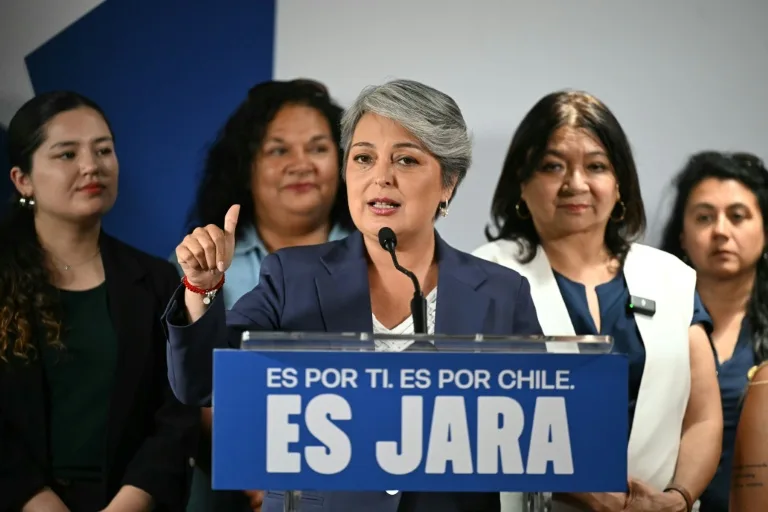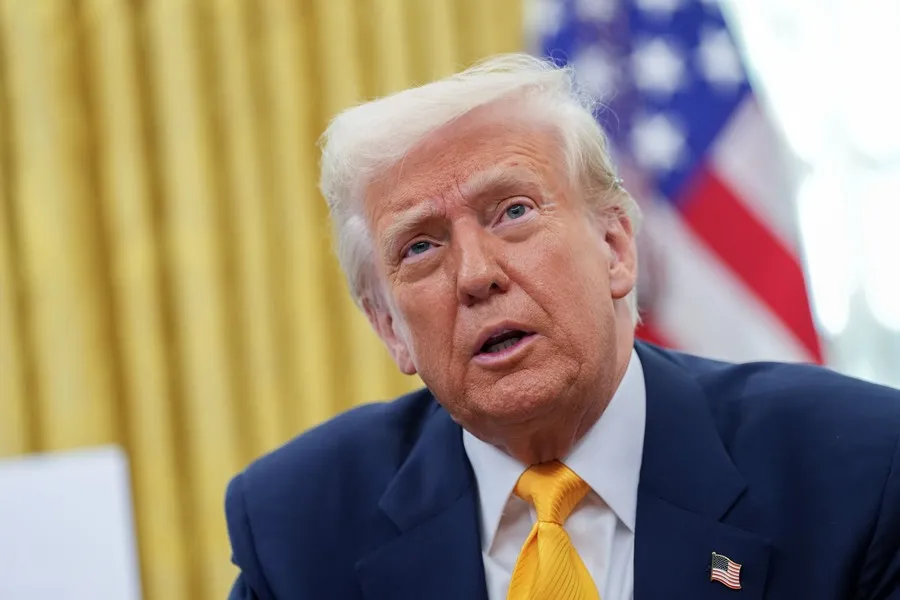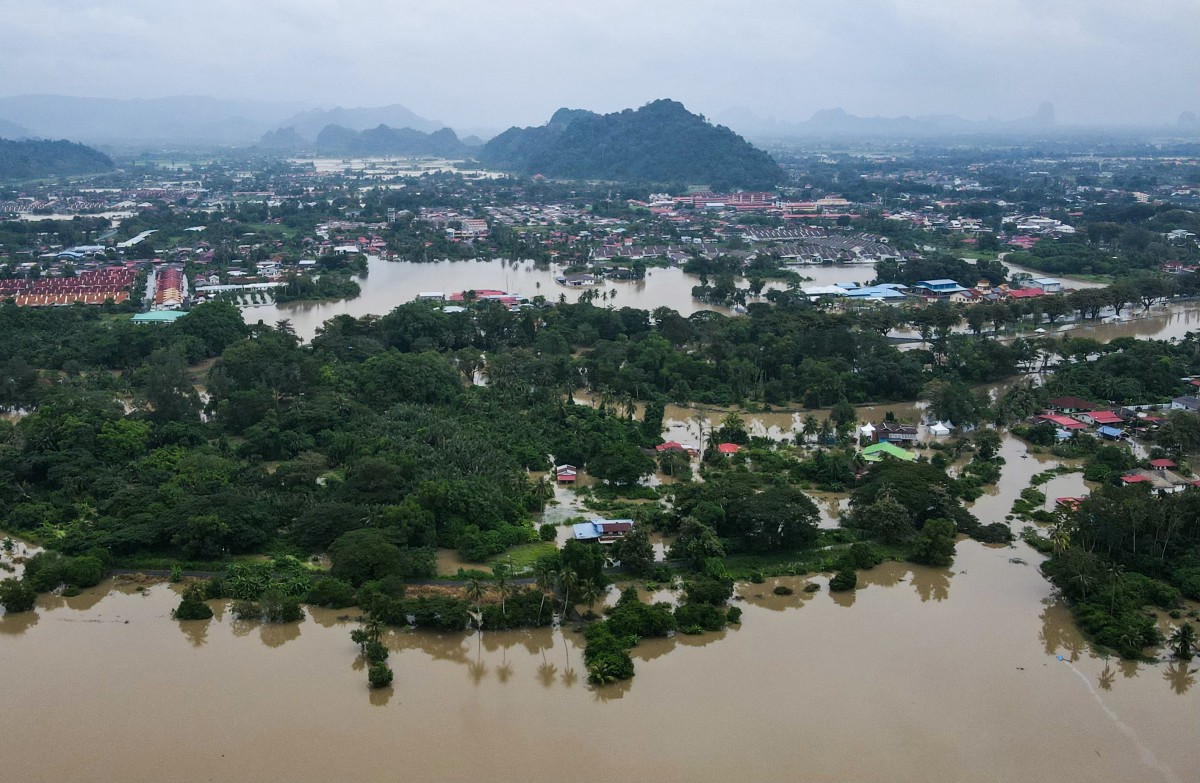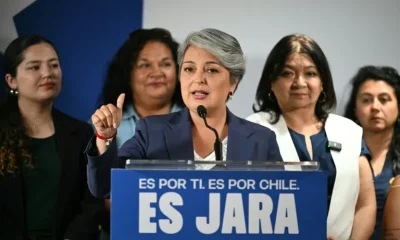International
Bolivia files ‘genocide’ charges against ex-president Anez

AFP
The Bolivian prosecutor’s office said on Friday it had filed charges of “genocide” and other crimes against former acting president Jeanine Anez, over the death of 20 opposition protesters in 2019.
Attorney General Juan Lanchipa said he had presented documents “against citizen Jeanine Anez” before the country’s Supreme Court of Justice, including charges for “genocide,” which carries a sentence of 10 to 20 years in prison, according to the Bolivian penal code.
The conservative Anez came to power in November 2019 after her predecessor and rival, former president Evo Morales, resigned following weeks of protest over his controversial reelection to an unconstitutional fourth term.
He fled the country after an election audit by the Organization of American States (OAS) found evidence of fraud.
After the election, at least 37 people died in violence that flared between supporters and opponents of Morales, as well as between protesters and the security forces.
Most of the deaths came in clashes between Morales supporters and security forces after the socialist leader’s flight.
The specific accusation against Anez relates to two incidents in November 2019 in which a total 22 people died. A report released by the OAS on Tuesday described those incidents as “massacres.”
Lanchipa said they had been “provisionally classified as genocide, serious and minor injury, and injury followed by death.”
After Morales resigned, Anez was the most senior parliamentarian left and was sworn in by congress as interim president despite the lack of a quorum, with legislators from Morales’ Movement for Socialism (MAS) boycotting the session.
MAS cried foul and accused the interim government of having pulled off a coup.
Under Anez’s administration, Bolivia held peaceful, transparent elections in October 2020 in which Morales’s protege Luis Arce stormed to a landslide victory.
He subsequently vowed to go after those he accused of staging a coup.
Anez was arrested in March 2021 on accusations of leading a coup against Morales, including charges of terrorism, sedition and conspiracy. She has remained in pre-trial detention since then.
Her detention elicited widespread international condemnation.
International
Chile enters runoff campaign with Kast leading and Jara seeking a last-minute comeback

Chile’s presidential runoff campaign for the December 14 election kicked off this Sunday, with far-right candidate José Antonio Kast entering the race as the clear favorite in the polls, while left-wing contender Jeannette Jara faces an uphill scenario, hoping for a comeback that some experts describe as “a miracle.”
The final polls released in Chile—published before the mandatory blackout on survey dissemination—give Kast, an ultraconservative former lawmaker running for president for the third time, a lead of between 12 and 16 points. His opponent, the communist former minister in Gabriel Boric’s current administration, is weighed down not only by the government’s low approval ratings but also by a fragmented electorate.
Although Jeannette Jara received the most votes in the first round with 26.9%, her lack of alliances beyond the left makes it difficult for her to expand her support. Kast, who secured 23.9%, has already brought key figures on board: ultralibertarian Johannes Kaiser (13.9%) and traditional right-wing leader Evelyn Matthei (12.4%), both now backing his candidacy.
Analysts note that although Kast’s support base consolidates more than 50% of the electorate, it does not guarantee an automatic transfer of votes. Populist economist Franco Parisi, who placed third with 19.7%, emerges as the major wildcard. His party, the People’s Party (PDG), is set to decide this Sunday through an internal consultation whether to endorse one of the two finalists.
International
Trump says asylum decision freeze will remain in place “for a long time”

U.S. President Donald Trump warned on Sunday that the suspension of decisions on asylum applications—implemented as part of his order to “halt” immigration from third-world countries following Wednesday’s shooting in Washington—will remain in effect “for a long time.”
The president declined to specify how long the freeze, imposed last Friday by the U.S. Citizenship and Immigration Services (USCIS), would last. The suspension affects individuals waiting for an asylum ruling from that agency, though it does not apply to cases handled by U.S. immigration courts.
The delay is part of a series of measures enacted by the Trump Administration after a shooting on Wednesday in which an Afghan national allegedly opened fire on the National Guard in Washington, D.C., killing one officer and leaving another in critical condition.
Trump has ordered a permanent halt to immigration from 19 countries classified as “third-world.” He also indicated on Sunday that “possibly” more nations could be added to the list.
“These are countries with high crime rates. They are countries that do not function well… that are not known for success, and frankly, we don’t need people from those places coming into our country and telling us what to do,” Trump said, adding: “We don’t want those people.”
USCIS had already announced on Thursday a “rigorous review” of green cards held by migrants from 19 “countries of concern,” including Afghanistan, Cuba, Venezuela, and Haiti.
International
Sri Lanka and Indonesia deploy military as deadly asian floods kill over 1,000

Sri Lanka and Indonesia deployed military personnel on Monday to assist victims of the devastating floods that have killed more than a thousand people across Asia in recent days.
A series of weather events last week triggered prolonged torrential rains across Sri Lanka, parts of Indonesia’s Sumatra island, southern Thailand, and northern Malaysia. Indonesian President Prabowo Subianto said Monday in North Sumatra that “the priority now is to deliver the necessary aid as quickly as possible.”
“There are several isolated villages that, with God’s help, we will be able to reach,” he added. Subianto also stated that the government had deployed helicopters and aircraft to support relief operations.
Floods and landslides have claimed 502 lives in Indonesia, with a similar number still missing.
This marks the highest death toll from a natural disaster in Indonesia since 2018, when an earthquake and subsequent tsunami killed more than 2,000 people.
The government has sent three military ships carrying aid and two hospital vessels to the hardest-hit regions, where many roads remain impassable.
In the village of Sungai Nyalo, located about 100 kilometers from Padang, the capital of West Sumatra, floodwaters had receded by Sunday, leaving homes, vehicles, and crops coated in thick mud.
-

 Central America3 days ago
Central America3 days agoTrump Pardons Former Honduran President Hernández and Warns of Aid Cuts Ahead of Election
-

 Central America1 day ago
Central America1 day agoHonduras Extends Voting by One Hour Amid High Turnout, CNE Announces
-

 International19 hours ago
International19 hours agoHong Kong police arrest 13 over deadly high-rise fire that killed 151
-

 Central America2 days ago
Central America2 days agoHonduras’ China–Taiwan Future Hinges on Sunday’s Presidential Election
-

 International3 days ago
International3 days agoMeta Says Russia Seeks to Ban WhatsApp for Defending Secure Communication
-

 International19 hours ago
International19 hours agoSri Lanka and Indonesia deploy military as deadly asian floods kill over 1,000
-

 International19 hours ago
International19 hours agoChile enters runoff campaign with Kast leading and Jara seeking a last-minute comeback
-

 International19 hours ago
International19 hours agoTrump says asylum decision freeze will remain in place “for a long time”






























